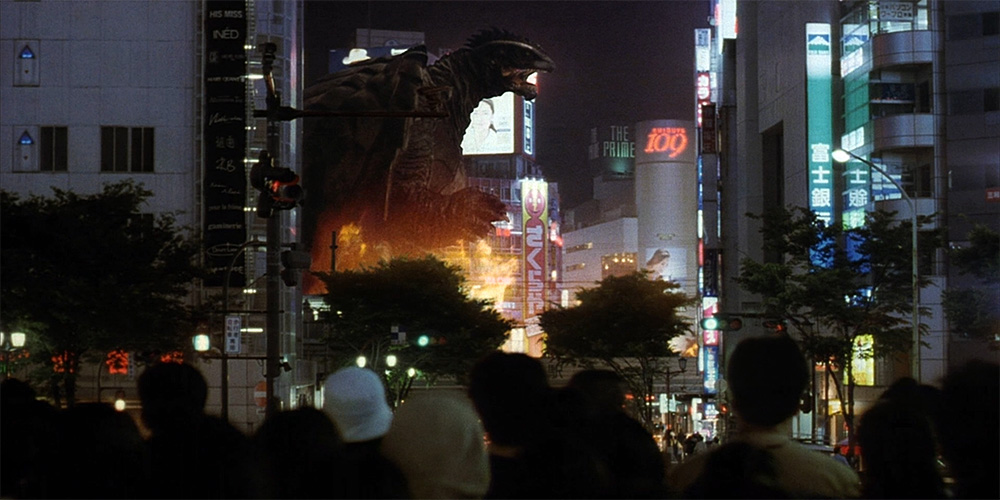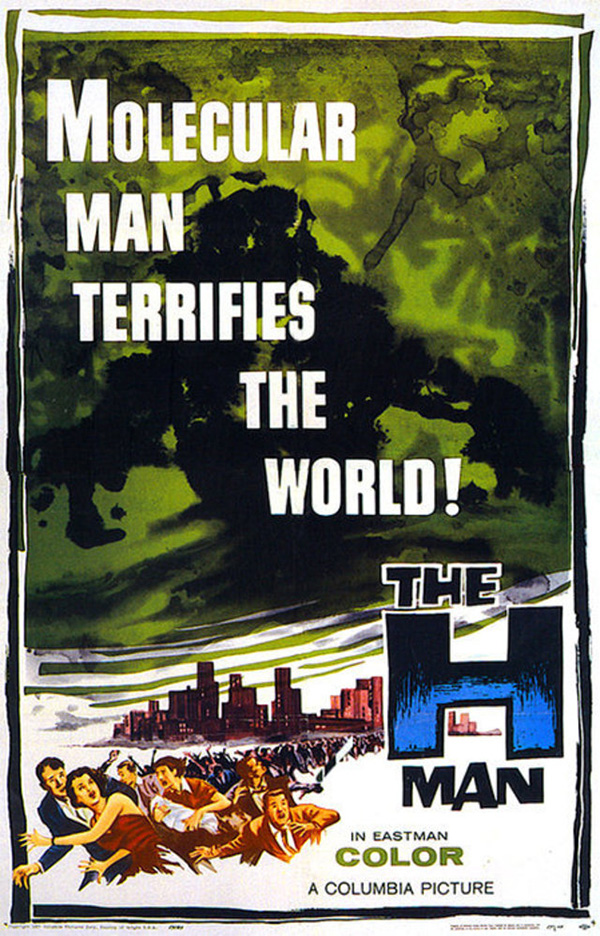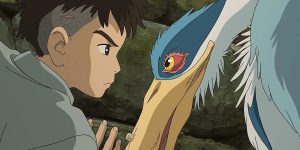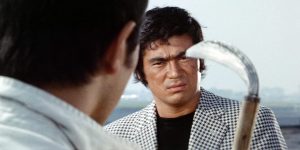
Japan Society going ‘Beyond Godzilla’
By Phil Mills | Mar 24, 2017
Starting today, the Japan Society are kicking off a new seven-film series entitled ‘Beyond Godzilla: Alternative Futures & Fantasies in Japanese Cinema’.
While Godzilla undoubtedly ranks among Japanese cinema’s most well-known and beloved exports, the collection of films in which he stars is only the tip of the iceberg when it comes to the rich and varied universe of Japanese tokusatsu (“special effects”) films. This new series, which will run from March 24—April 8, will introduce audiences to the wide-ranging imagination of the Japanese sci-fi/fantasy genre, including innovative B-movies, kaiju eiga (“monster movies”) and non-Godzilla classics involving director Ishiro Honda and effects maestro Eiji Tsuburaya.
The full program for the event is as follows:
The H-Man (1958)
Friday, March 24, 7 PM
Based on a scenario by Toho actor Hideo Unagami, this Ishiro Honda classic blends sci-fi, horror and noir to spooky and thrilling effect. The H-Man of the title is a creature formed of radioactive goo that is driven to liquefy humans—and can only be vanquished by electrifying or incinerating it to vapor. The film’s science may be dodgy but the tense climatic chase through underground sewers, with H-Men lurking about, is a Honda career highlight.
Invisible Man (1954)
Saturday, April 1, 4:30 PM
One of the many films inspired by the 1897 H.G. Wells sci-fi novella ‘The Invisible Man’ (including a 1949 film by the Daiei studio), Toho’s Invisible Man was released less than two months after Godzilla with Eiji Tsuburaya handling effects for both films. For the former, Tsuburya used optical compositing to enhance the illusion of invisibility, such as a motor scooter ridden by the invisible hero that seems to move on its own. Meanwhile, the ending recalls the famous farewell-in-a-fireball climax of Raoul Walsh’s ‘White Heat’.
Latitude Zero (1969)
Saturday, March 25, 7 PM
Starring Joseph Cotten, Cesar Romero and Richard Jaeckel — then Hollywood actors well known to Japanese fans — ‘Latitude Zero’ was Toho’s attempt to make an “international” film, though the studio had to downsize the budget when its U.S. production partner bailed. Nonetheless this genre mash-up of 20,000 Leagues Under the Sea, Lost Horizon and The Island of Dr. Moreau has its charms, from its sleek giant submarines to an undersea Shangri-la, ruled by Cotten’s urbane, benevolent sub captain, that still looks inviting.
The Secret of the Telegian (1960)
Saturday, April 1, 7 PM
Directed by Jun Fukuda and scripted by Shinichi Sekizawa, who were to later work together on Godzilla series entries, ‘The Secret of the Telegian’ is a fast-paced thriller with a sci-fi twist: A scientist uses teleportation—and the services of a former military man—to revenge himself on other ex-soldiers who tried to kill him during the war. Once again Eiji Tsuburaya supplies the effects, including a teleportation device that sparks and crackles in a spookily vivid electric blue.
Beyond Godzilla
Saturday, March 25, 5 PM
‘Beyond Godzilla’ series curator Mark Schilling traces the evolution of the sci-fi/fantasy genre in Japan that (save for one big, scaly beast) remains largely neglected, considering its prewar origins to the present. The lecture will introduce Schilling’s selections and provide context for their inclusion in relation to the history of sci-fi/fantasy films in Japan, from Toho sci-fi epics helmed by Ishiro Honda and Eiji Tsuburaya to fantasies by pioneering indie auteur Nobuhiko Obayashi and beyond.
Blue Christmas (1978)
Saturday, April 8, 4 PM
Best known for his samurai and war films, Kihachi Okamoto (‘Sword of Doom’) made ‘Blue Christmas’ from So Kuramoto’s original script as a rare sci-fi for adults. Despite a sensationalistic premise—contact with mysterious UFOs creates a new “race” of humans with blue blood—the film offers a serious critique of social discrimination and government oppression. A box office disappointment at the time of its release, it has since acquired cult cachet in Japan, while still dividing critics and fans.
School in the Crosshairs (1981)
Friday, March 31, 7 PM
This early “idol” movie by genre master Nobuhiko Obayashi (‘House’) features Hiroko Yakushimaru, then the heart-throb of millions of Japanese fans, as a spunky teen defending her high school from infiltration and domination by fascistic aliens. The action is more mind-bendingly fantastic than soberly scientific, featuring delightfully bizarre effects designed by Obayashi himself.
Gamera 3: Revenge of Iris (1999)
Saturday, April 8, 7 PM
Starting in 1995 with ‘Gamera, the Guardian of the Universe’, Shusuke Kaneko rebooted the Gamera tokusatsu series with a new trilogy starring the title flying giant turtle. The third film, ‘Gamera 3: Revenge of Iris’, which mixes ancient folktales about monsters asleep in mountains with modern fears about scientific horrors, is the best of the lot—one big reason being the monster-versus-monster battles created by effects supervisor Shinji Higuchi (‘Shin Godzilla’) intended to frighten and awe, not amuse with campy antics.
If you’re lucky enough to be based in the New York area, you can purchase tickets for each film now from the Japan Society website.

- Trailer [2]: ‘Twilight of the Warriors: Walled In’ - April 16, 2024
- Blu-ray & DVD release: ‘Crypto Storm’ - April 15, 2024
- Trailer: ‘Kingdom IV: Return of the Great General’ - April 15, 2024

















